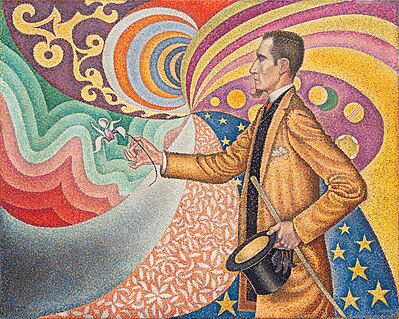Painting credit:
Paul Signac
Neo-Impressionism is a term coined by French art critic
Félix Fénéon in 1886 to describe an art movement founded by
Georges Seurat, whose most renowned masterpiece,
A Sunday Afternoon on the Island of La Grande Jatte, marked the beginning of this movement when it was first exhibited in Paris. Around this time, the peak of France's modern era emerged and many painters were in search of new methods. Followers of Neo-Impressionism, in particular, were drawn to modern urban scenes as well as landscapes and seashores. Science-based interpretation of lines and colors influenced Neo-Impressionists' characterization of their own contemporary art. The
Pointillist and
Divisionist techniques are often mentioned in this context, because it was the dominant technique in the beginning of the Neo-impressionist movement.
This picture is a oil-on-canvas portrait of Félix Fénéon in the Neo-Impressionist style by French painter
Paul Signac, dated 1890. The painting is now in the collection of the
Museum of Modern Art in New York City.
